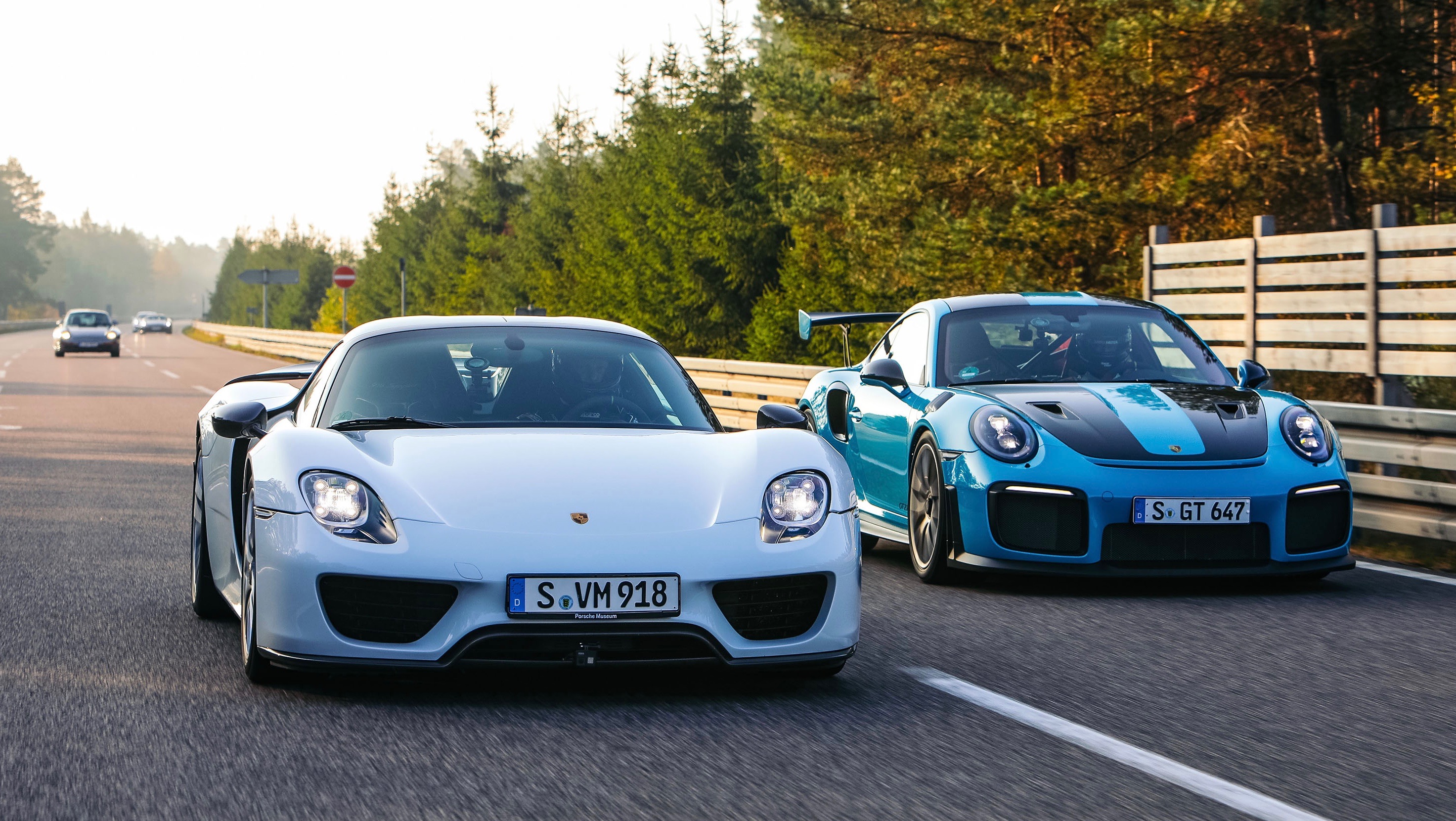Today's supercars versus yesterday's hypercars: how far has the bar been pushed?
With technology getting better at a rapid rate, cars are getting more rapid than ever too. We pitch the iconic hypercar holy trinity from Porsche, Mclaren and Ferrari against their current supercar lineup to see if today's supercars are actually faster than the hypercars from not too long ago.
 The 918 Spyder and the 911 GT2 RS
The 918 Spyder and the 911 GT2 RSTechnology is moving faster than ever, and cars are moving faster than ever too. The Mercedes-AMG A45 S makes almost as much horsepower as a Ferrari sportscar did, not too long ago. This got me thinking. How do modern day supercars square of against the hypercars from not too long ago? We take a look at the holy trinity of hypercars — the McLaren P1, Porsche 918 Spyder and the LaFerrari and put them up against the likes of the McLaren 765LT, Porsche 911 GT2 RS and the Ferrari SF90 Stradale.
McLaren P1 v 765LT
The McLaren P1 was the British carmaker’s entry into the hypercar holy trinity. It used a motorsport derived hybrid assist system and McLaren’s ubiquitous twin-turbocharged 3.8-litre V8. The P1 produced 903bhp, 900Nm of torque and could hit a top speed of 350kmph. The 765LT is the latest in McLaren’s LT line of track focused supercars. It uses a 4-litre twin turbo V8 which produces 755bhp and 800Nm of torque with a top speed of 330kmph. The 765LT is lighter than the P1 though, helping it achieve an identical 0 to 100kmph time of 2.8 seconds. The P1 does have a larger wing at the back which might help it achieve more downforce on track but the 765LT’s lighter weight and better brakes, from the Senna no less, will make it a closer battle than you might think.
Porsche 918 Spyder v 911 GT2 RS
The Porshce 918 Spyder was actually the most futuristic of the hypercar holy trinity owing to the fact that it used the most amount of hybrid tech and could even be driven in pure electric mode for upto 31 kilometres. It 4.6-litre V8 engine which produced 599bhp on its own, while the electric motors added an extra 282bhp, bringing the total up to 881bhp. Combined torque stood at 1280Nm. Meanwhile, the GT2 RS looks like an ordinary 911 from the outside, albeit with an aggressive body kit but Porsche worked extensively on dialling up the GT2 RS to the max. The GT2 RS gets a 3.8-litre twin-turbocharged flat-six producing 690bhp and 750Nm of torque. The GT2 RS is lighter than the 918 Spyder but is a tenth slower to 100kmph at 2.8 seconds. However, the GT2 RS is faster around the Nurburgring by over 10 seconds! Sure the electric motors and all-wheel-drive system of the 918 might make it faster in a straight line, but the GT2 RS is faster at almost any other racetrack in the world.
Laferrari v Ferrari SF90 Stradale
The LaFerrari was the most old school of the three hypercars and while it sounded like god’s personal orchestra, some claimed it was also the slowest around a track. The LaFerrari was no slouch though, thanks to a 6.2-litre V12 with an F1-derived KERS system, it puts out 936bhp and 700Nm of torque. Meanwhile, the latest and greatest mid-engined supercar from Ferrari is yet to hit the roads but we do have all the official specs for the SF90 Stradale. It will get a 4-litre V8 coupled with electric motors to give it an output of 986bhp and 800Nm of torque. Sure, the SF90 does have a marginal deficit on paper but it is actually half a second faster to 100kmph, at 2.5 seconds. The SF90 is also seven-tenths faster around Ferrari’s very own Fiorano test track.
It is mind-boggling how far automotive technology has come. According to the law of accelerating returns, technology will advance exponentially as we go forward. If you look at an iPhone from two years ago, it will still be fast no doubt, but a more affordable phone from 2020 will probably be able to run better and faster. It is similar for cars too. Production supercars are now eclipsing hyper cars from less than a decade ago, and you have to ask the question — are we taking cars in the right direction? Companies like Rimac and Tesla making electric cars that touch 100kmph in under two seconds from a standstill. However, this performance is rarely accessible on the road and even attempting to harness it in public is foolhardy. Should we leave hyper performance to hypercars, and let the more accessible supercars take another course? Let us know what you think!


